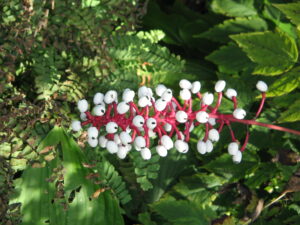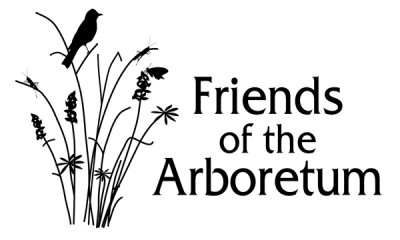 COMMON NAME: White Baneberry, Doll’s Eyes
COMMON NAME: White Baneberry, Doll’s Eyes
SCIENTIFIC NAME: Actaea pachypoda, actaea alba. The name comes from the ancient Greek word for elderberry and pachypoda meaning thick stalk. Alba, of course, means white.
FLOWER: Foamy, creamy-white flowers
BLOOMING PERIOD: May-June. White baneberry blooms a bit later than the red baneberry.
SIZE: 1 ½ to 2 feet
BEHAVIOR: Compound leaves with a stalk having a cluster of white flowers. Propagation is by seeds that are slow to germinate.
SITE REQUIREMENTS: Medium woods in loamy soils, part to full shade.
NATURAL RANGE: Canada to the southern states and west to Oklahoma. Grows in most of Wisconsin.
SPECIAL FEATURES: The most noticeable feature is the open cluster of shiny white fruit that develops in mid summer. Each berry has a dark spot and thus resembles an eye of an old-fashioned china doll. The berries are on a very thick pink to red stalk. The berries are poisonous which is probably the origin of “baneberry.”
SUGGESTED CARE: Choose a site with proper shade, good soil and sufficient moisture. Try not to disturb.
COMPANION PLANTS: Mixed hardwoods for the upper story, rattlesnake fern and spring ephemerals like blue cohosh, spring beauty, toothwort, wild geranium and hepatica.
SPECIAL NOTE: This plant is not suitable where young children might by tempted to try the poisonous berries.
